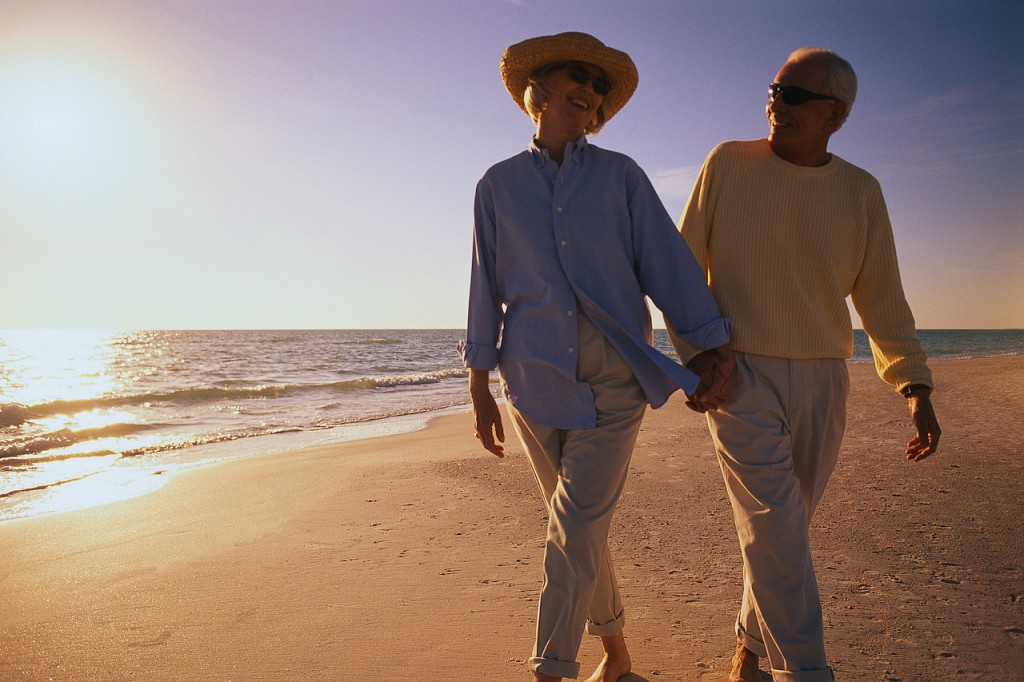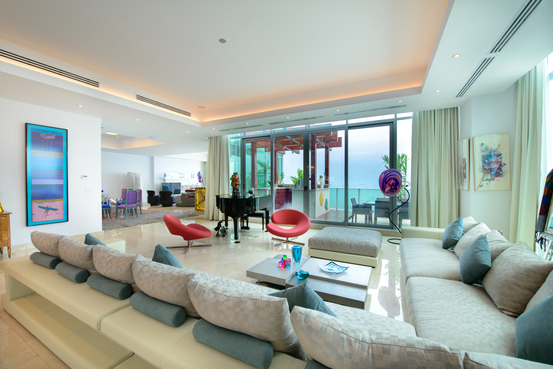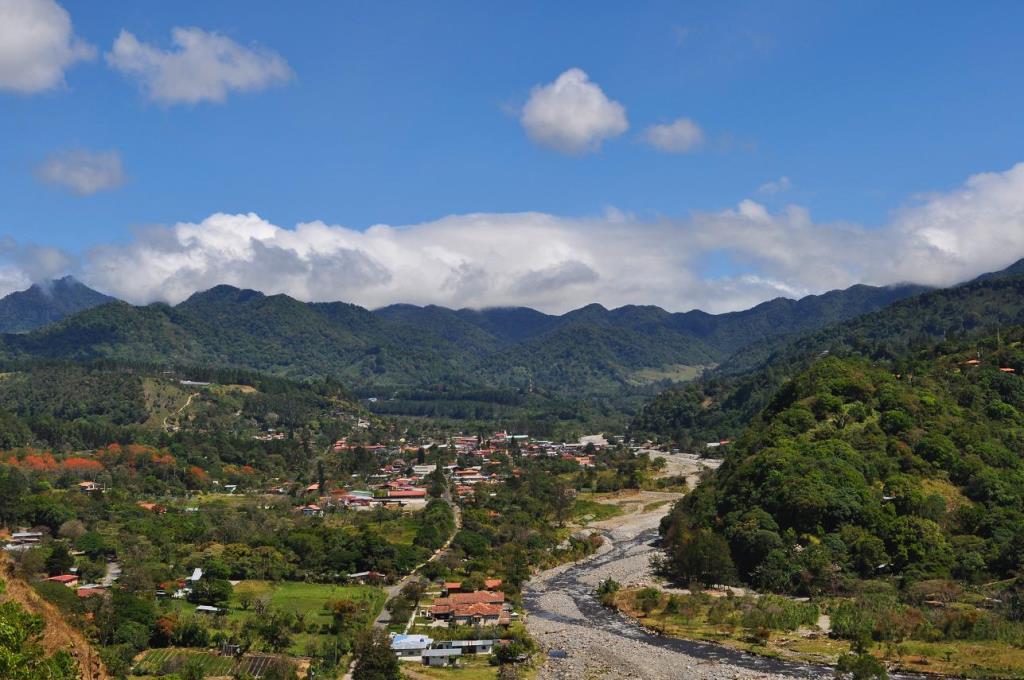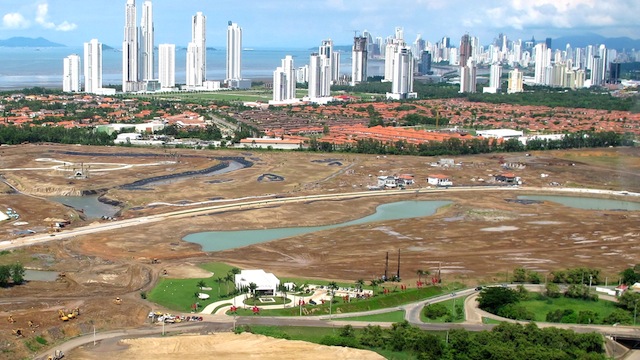Here is a great article that appeared in the Wall Street Journal about the growth of retirees headed south of the border, way south!!
When Steven and Robin Fine started searching for a place in Latin America to spend their early retirement, they looked at spots in Mexico and Costa Rica, both popular destinations for American retirees. On a trip two years ago, they decided to stop by Panama, too.
“We thought we would like Panama the least,” Mr. Fine, 51 years old, a former communications executive said, “but we liked it the best.”
The combination of luxury apartment buildings, good restaurants and modern hospitals drew the couple to Panama City, where 1½ years ago they spent $1.1 million, plus about $250,000 on renovations, on a 48th-floor penthouse with a view of the Pacific. It is now their full-time home.
The Central American nations of Panama, Belize and Nicaragua are increasingly competing with Costa Rica and Mexico for North American retirees and second-home buyers. New luxury developments, outfitted with spas, restaurants, marinas and golf courses, are on the rise. Builders say they are using more high-end materials and adding upscale amenities designed to appeal to affluent American buyers.
These countries offer packages of residency and breaks on taxes and fees that imitate Costa Rica’s pensionado program, which was introduced in 1971 and helped set the groundwork for a boom in retiree emigration from North America. Nicaragua added such a law in 2009, offering foreigners with retirement incomes tax breaks on everything from cars to construction materials. Last year, Panama, which has a long-established retiree program, created a path to citizenship for retirement residents and introduced a new residency program for people under retirement age that has lowered requirements for investment in property, business and other ventures.
“The message of this law is simple,” said Panama City-based attorney Manoj Chatlani of Panama Offshore Legal Services. “It’s ‘Come to Panama.’
The number of Americans who collect Social Security in Panama jumped 65% to 2,164 between 2006 and 2011, the latest year for which there is information. In Nicaragua, the figure more than doubled in the same period, from 595 to 1,322. Belize’s number, too tiny for the Social Security Administration to track in years past, was 560 in 2011.
Panama’s explosive growth—gross domestic product increased by an average of 8.5% annually since 2008, according to International Monetary Fund estimates—has drawn American workers and businesses to Panama City over the past decade. Now, local developers are courting another population, focusing on building amenity-rich planned communities outside the city to appeal to North American retirees.
Boquete, a town about 40 miles from the Costa Rican border, offers high-end gated communities, an established expat community, cool mountain temperatures and tropical-rainforest landscape. More people are coming to Boquete each year as it has been ranked in the top ten retirement locations by the AARP for many years now.
On the east side of Panama City, a 700-acre community called Santa Maria Golf & Country Club is being built to include 4,000 colonial-style houses, townhouses and condominiums, and a golf course designed by Jack Nicklaus’s company. The homes, yet to be completed, sell for about $278 a square foot, a “top price” in Panama City, said Kent Davis, broker at Panama Equity Real Estate.
“Santa Maria is a product that hadn’t existed in Panama before: the luxury suburban community—more American-style larger lots,” Mr. Davis said. Most pre-delivery buyers have been Panamanians; local agents say they expect American interest to rise as the development nears completion in five to 10 years.
Belize, a small, English-speaking nation with a population of about 330,000, has been popular for years as a scuba-diving and ecotourism destination. High-end properties had to be custom-built until the early 2000s, when developers started putting up “single homes here and there,” said Hugo Moguel, president of the Association of Real Estate Brokers of Belize, which is launching the country’s first multiple-listing service in August.
Now, developers are attempting to sell Belize as a luxury-living place to retire. New developments include Sanctuary Belize, a 14,000-acre development slated for completion in three years that will have 2,000 residential lots, 250 condominiums and townhouses, and a 220- to 250-slip marina. The buildings’ poured-concrete construction meets Dade County, Fla., hurricane-resistant standards, said Luke Chadwick, a partner in Eco-Futures Development. Developer financing is available.
Of the 600 lots Sanctuary has sold so far, 80% of them have been to Americans, he said. The core demographic is “50 to 65 year olds, either in retirement or planning for retirement,” Mr. Chadwick added. Lot prices range from $149,000 to $1 million for an acre overlooking the Caribbean, he said.
Tom and Tricia Herskowitz moved into their 7,000-square-foot compound in Sanctuary this past September, lured by the boat slip and Caribbean access. “The fact that the country is English speaking and is a Commonwealth country was attractive to us,” said Mr. Herskowitz, 68, a retired executive and business-school professor.
Amid growing tourism—and aided by the lowering of a foreigner transaction tax in 2006—there has been a boom in luxury-condo developments, especially on the island of Ambergris Caye, popular with expats.
“There are beachfront condos going up that are going to feature elevators, which didn’t exist in Belize before. Most of the buyers are baby boomers and they are aging,” said Dmitri Ioudine, owner of Coldwell Banker Ambergris Caye Ltd. Local builders say building materials have improved as local suppliers bring in higher-end materials.
Despite their inroads with American retirees, these countries still don’t attract the same numbers as more established destinations, such as Mexico and Costa Rica. In 2011, more than 50,000 Americans collected Social Security in Mexico and more than 5,000 in Costa Rica. But Mexico’s well-publicized drug war and escalating violence are starting to push Americans to look at new places for retirement.
Central America, however, has its own problems with crime. The U.S. Department of State labeled the crime rate in Nicaragua “critical” and the murder rate in Belize “extremely high,” though concentrated in Belize City and not in tourist areas. In Costa Rica, petty crime such as theft and “smash and grab” muggings have increased in the past couple of years, along with home invasions.
In Panama, murders and gun violence have decreased in recent years, but reported rape and theft have increased. “Panama remains relatively safe when compared with other Central American countries, yet crime rates are higher than one would encounter in most of the United States,” says the State Department’s 2013 report.
Dan Prescher, who leads conferences by International Living, a provider of information for people interested in retiring abroad, says urban crime rates can exaggerate safety issues in other areas of a country. Still, he warns that public security isn’t always adequate in the region.
Nicaragua is the latest country to attempt to grab North American interest. In Guacalito de la Isla, a 16,070-acre coastal development—with 600 residences, a pool, restaurant and gym—is under construction. A two-hour drive from Managua’s international airport, the project includes a plan to open a small airport by 2015. The first homes—28 single-family houses—will be turned over to owners in September. The four-bedroom, four-bath pool houses sold for between $700,000 and $750,000, said Jeff Lawrence, director of real estate. A luxury hotel-resort on the property, Mukul, opened in January and has helped boost sales, he said.
“The buyers right now are 85% Nicaraguan and 15% U.S. based,” Mr. Lawrence said. “There is an education hurdle for us to convince people that Nicaragua is safe and is a tropical paradise.”




